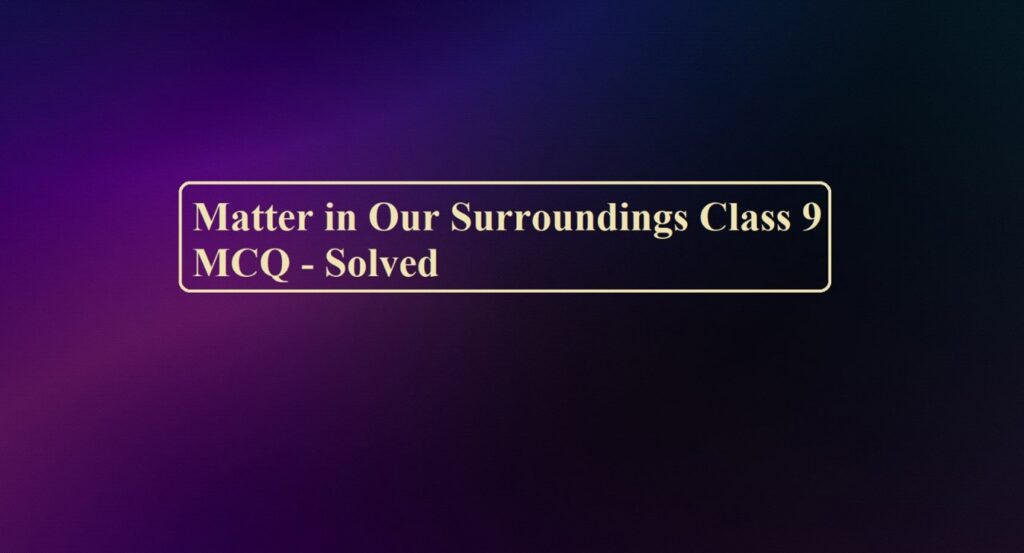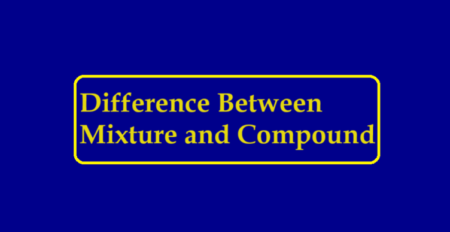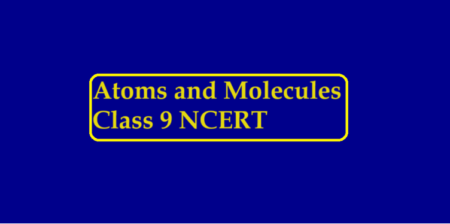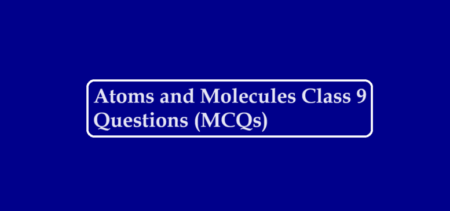Matter in Our Surroundings Class 9 MCQ – Solved
Matter in Our Surroundings Class 9 MCQ – Solved
Que 1. The quantity of matter present in an object is called its:
(a) Weight
(b) Gram
(c) Mass
(d) Density
Ans 1. (c) Mass
Reason: Mass depends on the quantity of matter.
Que 2. Which of the following phenomena would increase on raising the temperature?
(a) Diffusion, evaporation, compression of gases
(b) Evaporation, compression of gases, solubility
(c) Evaporation, diffusion, expansion of gases
(d) Evaporation, solubility, diffusion, compression of gases
Ans 2. (c) Evaporation, diffusion, expansion of gases
Que 3. In all the three states of water, (i.e. ice, liquid and vapour) chemical composition of water
(a) Is very different
(b) Remains the same
(c) Sometimes same and sometimes different
(d) None of the above
Ans 3. (b)
Reason: In all the three states of water, (i.e. ice, liquid and vapour) chemical composition (H2O) of water remains the same only the physical state is different.
Que 4. CO2 can be easily liquified and even solidified because
(a) It has weak forces of attraction
(b) It has comparatively more force of attraction than other gases
(c) It has more intermolecular space
(d) It is present in the atmosphere.
Ans 4. It has comparatively more force of attraction than other gases
Que 5. The melting point of ice is:
(a) 273.16 K
(b) 723.16 K
(c) 263.16 K
(d) 373 K
Ans 5. (a) 273.16 K
Reason: Because ice melts above 0 0C (273.16 K)
Que 6. When a gas jar full of air is placed upside down on a gas jar full of bromine
vapours, the red-brown vapours of bromine from the lower jar go upward into the jar
containing air in this experiment
(a) Air is heavier than bromine
(b) Both air and bromine have the same density
(c) Bromine is heavier than air
(d) Bromine cannot be heavier than air because it is going upwards against gravity
Ans 6. (b) Both air and bromine have the same density
Que 7. Which is not a common characteristic property of matter?
(a) The molecules possess kinetic energy
(b) The molecules occupy a certain volume
(c) The molecules are rigid and have fixed positions
(d) The molecules vibrate between the mean positions
Ans 7. (c) The molecules are rigid and have fixed positions
Que 8. The quantity of matter present in an object is called its:
(a) Weight
(b) Gram
(c) Mass
(d) Density
Ans 8. (c) Mass
Que 9. In which of the following conditions, the distance between the molecules of hydrogen gas would increase?
(a) Increasing pressure on hydrogen contained in a closed container and increasing the volume of the container of hydrogen gas.
(b) Increasing pressure on hydrogen contained in a closed container and adding more hydrogen gas to the container without increasing the volume of the container.
(c) Some hydrogen gas leaking out of the container and increasing the volume of the container of hydrogen gas.
(d) Some hydrogen gas leaking out of the container and adding more hydrogen gas to the container without increasing the volume of the container.
Ans 9. (c) Some hydrogen gas leaking out of the container and increasing the volume of the container of hydrogen gas
Que 10. Which of the following is not a physical change?
(a) Sublimation of camphor
(b) Rusting of Iron
(c) Breaking of a glass tumbler
(d) All of the above
Ans 10. (B) Rusting of Iron
Reason: Rusting of Iron is a chemical phenomenon.
Matter in Our Surroundings Class 9 MCQ – Solved
Que 11. Seema visited a Natural Gas Compressing unit and found that the gas can be liquefied under specific conditions of temperature and pressure. While sharing her experience with friends she got confused. Help her to identify the correct set of conditions.
(a) Low temperature, low pressure
(b) High temperature, low pressure
(c) Low temperature, high pressure
(d) High temperature, high pressure
Ans 11. (c) Low temperature, high pressure
Que 12. Which of the following statements is incorrect about the state of matter?
(a) The force of attraction between the gas particles is significantly less.
(b) Plasma consists of super energetic and super excited particles.
(c) The plasma glows with a special colour depending on the nature of the gas.
(d) Bose-Einstein condensate is formed by heating gas of extremely low density.
Ans 12. (d) Bose-Einstein condensate is formed by cooling a gas of extremely low density.
Que 13. Which of the following has the highest kinetic energy?
(a) Particles of ice at 0 °C
(b) Particles of water at 0 °C
(c) Particles of water at 100 °C
(d) Particles of steam at 100 °C
Ans 13. (d) Particles of steam at 100 °C
Que 14. Find the incorrect statement
(a) Low boiling liquids evaporate faster than high boiling liquids.
(b) Cooling is caused during boiling
(c) The normal room temperature is 298 K
(d) Evaporation is a surface phenomenon but boiling is not
Ans 14. (b) Cooling is caused during boiling
Que 15. Which of the following is incorrect about plasma?
(a) Fluorescent tube and neon sign bulbs consist of plasma.
(b) The gas gets ionised when electrical energy flows through it.
(c) It consists of super-energetic and super-excited particles.
(d) The plasma glows with colour which does not depend upon nature of gas.
Ans 15. (d) The plasma glows with colour which does not depend upon nature of gas.
Que 16. The property of flow is unique to fluids. Which one of the following statements is correct?
(a) Only gases behave like fluids
(b) Gases and solids behave like fluids
(c) Gases and liquids behave like fluids
(d) Only liquids are fluids
Ans 16. (c) Gases and liquids behave like fluids
Que 17. Zig zag movement of solute particles in a solution is known as
(a) Linear motion
(b) Circular motion
(c) Brownian motion
(d) Curved motion
Ans 17. (c) Brownian motion
Que 18. In which of the following substances do the molecules possess maximum kinetic energy under normal conditions?
(a) Sugar
(b) Sulphur powder
(c) Ammonium Chloride
(d) Common Salt
Ans 18. (c) Ammonium Chloride
Que 19. The liquid which has the highest rate of evaporation is:
(a) Petrol
(b) Nail- polish remover
(c) Water
(d) Alcohol
Ans 19. (b) Nail-polish remover
Reason: It contains acetone, the evaporation happens faster due to less intermolecular force.
Que 20. The density of a substance is defined as
(a) Ratio of mass and volume
(b) Product of mass and volume
(c) Ratio of mass and temperature
(d) Product of mass and temperature
Ans 20. (a) The ratio of mass and volume
Matter in Our Surroundings Class 9 MCQ – Solved
Que 21. A solid having a melting point of 325℃ is subjected to heating. Which Statement is true which comply with this Solid?
(i) The kinetic energy of the molecules increases continuously till the liquid state at 598 K is obtained.
(ii) The solid melts if it is heated up to 598 K and stopped.
(iii) The molecules of molten solid possess greater amounts of energy than the solid at the same temperature.
(iv) Heating the solid at room temperature supplies latent heat of fusion for the solid to undergo melting.
(a) i, ii, iii and iv
(b) iii, iv
(c) i, iv
(d) iii only
Ans 21. (d) iii only
Que 22. A few substances are arranged in the increasing order of ‘forces of attraction between their particles. Which one of the following represents a correct arrangement?
(a) Water, air, wind
(b) Air, sugar, oil
(c) Oxygen, water, sugar
(d) Salt, juice, air
Ans 22. (c) Oxygen, water, sugar
Que 23. During summer, water kept in an earthen pot becomes cool because of the phenomenon of:
(a) Diffusion
(b) Transpiration
(c) Osmosis
(d) Evaporation
Ans 23. (d) Evaporation
Que 24. Which of the following is not an endothermic process?
(a) Fusion
(b) Vapourisation
(c) Temperature
(d) Insoluble heavy impurities
Ans 24. (c) Temperature
Que 25. Choose the correct statement from the following:
(a) Conversion of solid into vapour without passing through the liquid state is called vaporisation.
(b) Conversion of vapour into solid without passing through the liquid state is called sublimation.
(c) Conversion of vapour into solid without passing through the liquid state is called freezing.
(d) Conversion of solid into liquid is called sublimation.
Ans 25. (b) Conversion of vapour into solid without passing through the liquid state is called sublimation.
Que 26. The boiling points of diethyl ether, acetone and n-butyl alcohol are 35°C, 56°C and 118°C respectively. Which one of the following correctly represents their boiling points on the Kelvin scale?
(a) 306 K, 329 K and 391 K
(b) 308 K, 329 K and 392 K
(c) 308 K, 329 K and 391 K
(d) 329 K, 392 K and 308 K
Ans 26. (c) 308 K, 329 K and 391 K
Que 27. The boiling point of water at sea level is
(a) 0°C
(b) 273 K
(c) 373 K
(d) 273°C
Ans 27. (c) 373 K
Que 28. Which of the following conditions is most favourable for converting gas into a liquid?
(a) High pressure, low temperature
(b) Low pressure, low temperature
(c) Low pressure, high temperature
(d) High pressure, high temperature
Ans 28. (a) High pressure, low temperature
Que 29. The liquid metal among the following is:
(a) Gallium
(b) Mercury
(c) Both A and B
(d) Berylium
Ans 29. (c) Both A and B
Que 30. A substance is a form of matter that has a _______________composition:
(a) Definite
(b) Uniform
(c) Nonuniform
(d) Mixed
Ans 30. (a) Definite
Matter in Our Surroundings Class 9 MCQ – Solved
Que 31. The chemical formula of crystals of copper sulphate is:
(a) CuSO4.5H2O
(b) Cu2SO4.5H2O
(c) CuSO4
(d) Cu2SO4
Ans 31. (a) CuSO4.5H2O
Que 32. Which of the following processes is known as fusion?
(a) Change of liquid to solid
(b) Change of solid to liquid
(c) Change of liquid to vapour
(d) Change of gaseous state to solid state
Ans 32. (b) Change of solid to liquid
Que 33. A student adds ink to water. The ink particles spread throughout the water. Which property of water allows other particles to diffuse in it?
(a) Fixed volume
(b) Inability to compress
(c) Intermolecular spaces
(d) Ability to change shape
Ans 33. (c) Intermolecular spaces
Que 34. Why does an ice cube melt when put out of the refrigerator?
(a) Because it loses heat and its particles move faster and farther causing melting
(b) Because it loses heat and its particles gain kinetic energy changing from solid to liquid
(c) Because it gains heat and its particles come closer since the force of attraction increases
(d) Because it gains heat and its particles start moving faster and overcome the force of attraction
Ans 34. (d) Because it gains heat and its particles start moving faster and overcome the force of attraction.
Que 35. Clothes do not dry quickly when there is more humidity in the air. What explains the phenomenon?
(a) High humidity decreases the rate of evaporation
(b) High humidity increases the rate of evaporation
(c) High humidity decreases the rate of condensation
(d) High humidity increases the rate of condensation
Ans 35. (c) High humidity decreases the rate of condensation
Que 36. The kinetic energy of molecules is directly proportional to
(a) Temperature
(b) Pressure
(c) Both (a) and (b)
(d) Atmospheric pressure
Ans 36. (a) Temperature
Matter in Our Surroundings Class 9 MCQ – Solved



